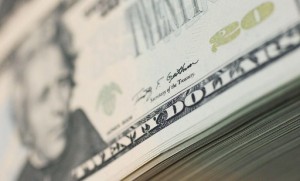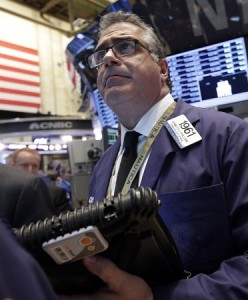MANILA, Philippines—With an improving fiscal situation, the national government is considering establishing a sovereign wealth fund that it can use for various investments, the profits of which can be tapped for various development projects.
This was according to Governor Amando Tetangco Jr., who said the Bangko Sentral ng Pilipinas would be willing to sell dollars to the national government should the creation of the fund be pursued and should foreign currency-denominated assets be considered among the investment options.
“The government is looking into it [creation of the fund]; it is very much on the drawing board right now,” the BSP governor told reporters on Wednesday at the sidelines of the annual convention of the Chamber of Thrift Banks.
He said the Department of Finance, headed by Secretary Purisima, has begun a study on the merits and feasibility of creating the proposed sovereign wealth fund.
The proposal for the establishment of the said fund came amid the country’s growing foreign exchange reserves, which currently stand at about $84 billion.
The BSP, however, is not allowed by its charter to invest the foreign-exchange reserves in risky assets and undertakings, and is confined to investing in conservative assets, such as US treasuries.
But Tetangco said the national government can create the fund and then buy dollars from the BSP in the event it decides to invest in foreign currency-denominated assets or projects offshore. He said that given the Philippines’ substantial foreign-exchange reserves, the BSP has flexibility to sell dollars to the government.
“Right now there are legal constraints for the BSP to go into something like creating the sovereign wealth fund. So if the government decides to put up this fund, the BSP can sell them dollars, which they can use to fund their investment operations, particularly abroad,” Tetangco said.
According to Tetangco, the country’s gross international reserves (GIR) exceed all benchmarks for adequacy.
The GIR of $84 billion is enough to cover for nearly one year worth of its import requirements. It was also equivalent to 6.6 times the combined short-term, foreign currency-denominated debts of private and government entities in the Philippines.
Based on international standards, a country’s GIR is said to be adequate if it can cover three to four months’ worth of its import requirements, or if it is equal to the short-term debts to foreign creditors.
The buildup of the country’s foreign-exchange reserves is attributed to strong inflow of remittances, foreign portfolio investments, and foreign investments in the business process outsourcing (BPO) sector.
The inflows have allowed the BSP to buy dollars from the foreign exchange market—an activity that it does if it sees need to temper appreciation pressures on the peso.



